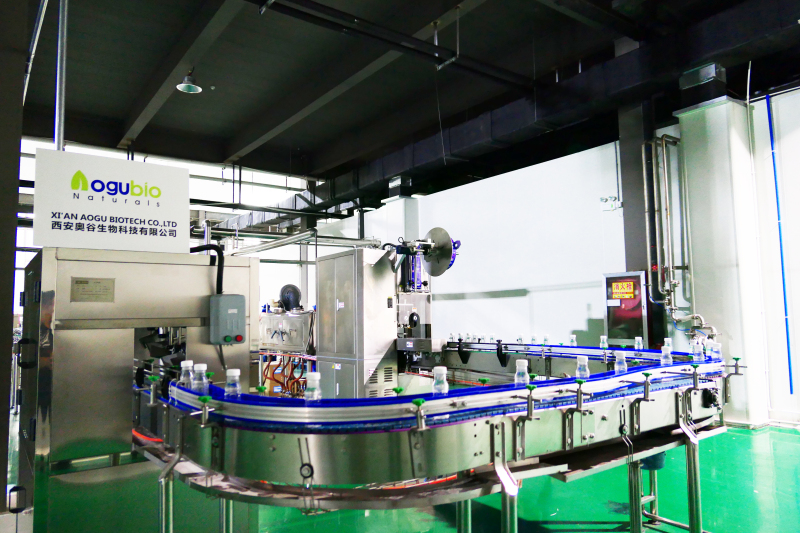Top Grade Fish Breeding Extract CCP CPG Common Carp Pituitary Gland
Products Description



Carp pituitary gland is an extract of the carp pituitary gland, commonly used in medical and biological research and in aquaculture applications.
- Chemical composition: Carp pituitary gland extract contains a variety of biologically active substances, such as growth hormone, thyroid-stimulating hormone, adrenocorticotropic hormone, etc.
- Research purposes: In biomedical research, carp pituitary gland extract is often used to study the growth and development, endocrine regulation and physiological functions of animals.
- Breeding application: In the breeding industry, carp pituitary gland extract can be used to promote fish growth, increase reproduction rate and improve feed conversion rate.
CPG are used in fish spawning operations for both female and male fish. With female fish to induce spawning, with male fish toinduce spermiation.
CPG have a use in a wide variety of fish because of its harmless nature product.
CPG are currently used with: Carp, grass carp, big head carp and silver carp. Catfish, channel catfish and blue catfish. White sturgeon Tropical and ornamental fish including freshwater shark, Muskellunge and others.
Function
- Promote growth: The growth hormone in carp pituitary gland extract can promote fish growth and accelerate weight gain.
- Regulate reproduction: The gonadotropin in pituitary gland extract can regulate the reproductive cycle and behavior of fish and increase the reproduction rate.
- Improve feed utilization: Carp pituitary gland extract can improve the digestion and absorption of feed by fish, increase feed utilization, and reduce breeding costs.
Overall, carp pituitary gland extract has important application value in medical research and breeding industry, and can promote growth, regulate reproduction and improve feed utilization.
Food Allergen Information
| ALLERGENS | PRESENCE | ABSENCE | PROCESS COMMENT |
| Milk or milk derivatives | No | Yes | No |
| Egg or egg derivatives | No | Yes | No |
| Fish or fish derivatives | No | Yes | No |
| Shellfish, crustaceans, mollusks & their derivatives | No | Yes | No |
| Peanuts or peanut derivatives | No | Yes | No |
| Tree nuts or their derivatives | No | Yes | No |
| Soy or soy derivatives | No | Yes | No |
| Wheat or wheat derivatives | No | Yes | No |
Research and application
Common carp (Cyprinus carpio) is an economic fish widely distributed in freshwater environments. Its pituitary gland, as an important component of the endocrine system, plays a variety of physiological functions such as regulating growth, development and reproduction.
1. The structure of the carp pituitary gland
The carp pituitary gland is located at the bottom of the brain, close to the hypothalamus, and is mainly composed of the anterior lobe (adenohypophysis) and the posterior lobe (neuropituitary). The anterior lobe is mainly responsible for secreting a variety of hormones, while the posterior lobe mainly stores and releases hormones synthesized by the hypothalamus.
- Anterior lobe: secretes growth hormone (GH), gonadotropin (GTH), adrenocorticotropic hormone (ACTH), etc.
- Posterior lobe: Mainly stores antidiuretic hormone (ADH) and oxytocin.
2. Function
The carp pituitary gland regulates a variety of physiological processes by secreting hormones:
- Growth regulation: Growth hormone promotes the growth and development of carp, affecting their weight and length.
- Reproductive regulation: Gonadotropins regulate the development of gonads, affecting the production of eggs and sperm, and thus affecting reproductive capacity.
- Stress response: ACTH is involved in stress response and regulates the physiological adaptation of fish to environmental changes.
- Water balance: Antidiuretic hormone regulates the balance of water in the body and affects the osmotic pressure of fish.
3. Role in reproduction
The reproduction process of carp is significantly affected by pituitary hormones. The secretion of gonadotropin is closely related to environmental factors (such as temperature and light), which affects the breeding season and breeding behavior of fish. Studies have shown that appropriate hormone levels can promote the maturation and reproduction of carp and improve the success rate of reproduction.
4. Application
- Aquaculture: Understanding the function of the carp pituitary gland helps optimize breeding conditions and improve the growth and reproduction efficiency of fish. Through artificial regulation of hormones, artificial breeding of carp can be achieved to meet market demand.
- Biomedical Research: Research on the carp pituitary gland provides an important basis for understanding the endocrine system of fish and helps scientists explore the physiological mechanisms of other aquatic organisms.
5. Future Research Directions
- Hormone secretion mechanism: In-depth study of the secretion mechanism of carp pituitary hormones and its regulatory factors.
- Environmental Impact: Explore the effects of environmental changes (such as water temperature, light, pollutants) on pituitary function.
- Gene research: Through genomics and transcriptomics technologies, we study genes related to pituitary function and their expression regulation.
In conclusion
The carp pituitary gland plays an important role in regulating growth, development and reproduction. In-depth research on its structure and function can not only improve the efficiency of aquaculture, but also provide an important basis for biomedical research. With the advancement of science and technology, future research on the carp pituitary gland will provide more theoretical support and practical guidance for aquaculture and ecological protection.
Gmo statement
We hereby declare that, to the best of our knowledge, this product was not produced from or with GMO plant material.
Ingredient statement
Statement Option #1: Pure Single Ingredient
This 100% single ingredient does not contain or use any additives, preservatives, carriers and/or processing aids in its manufacturing process.
Statement Option #2: Multiple Ingredients
Must include all/any additional sub ingredients contained in and/or used in its manufacturing process.
Gluten free statement
We hereby declare that, to the best of our knowledge, this product is gluten-free and was not manufactured with any ingredients containing gluten.
(Bse)/ (Tse) Statement
We hereby confirm that, to the best of our knowledge, this product is free of BSE/TSE.
Cruelty-free statement
We hereby declare that, to the best of our knowledge, this product has not been tested on animals.
Kosher statement
We hereby confirm that this product has been certified to Kosher standards.
Vegan Statement
We hereby confirm that this product has been certified to Vegan standards.
Trans Fat
This product does not contain any trans fats.
























